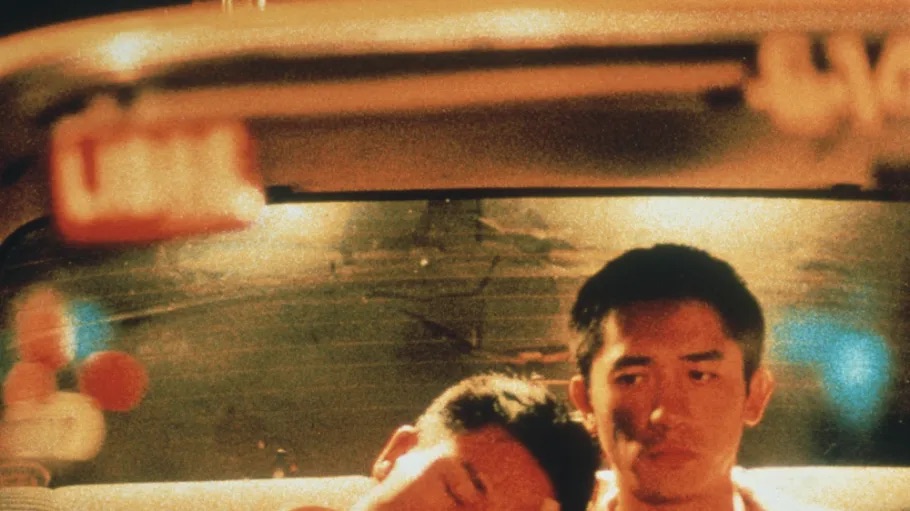The Adventures of Priscilla, Queen of the Desert offers a unique blend of camp aesthetics and a nuanced exploration of queer identities, making it an emblematic queer road trip film. This essay explores the film’s narrative, character development, and thematic content, focusing on the journey both as a literal and a metaphorical exploration of queerness.
At its heart, The Adventures of Priscilla is about the transformative power of a road trip. The journey across the Australian outback carried out by two drag queens and a transgender woman in their bright pink bus, Priscilla, goes beyond their physical travels. It brings about a deeper exploration into their personal and collective identities. The road, often a symbol of freedom and discovery in traditional road trip narratives, is repurposed in this movie as a space where the characters confront and negotiate their queerness in relation to the wider world. Additionally, the physical journey mirrors the inner journeys taken by each of the characters. Each stop along the road serves as a moment of introspection or conflict resolution, whether it’s coming to terms with past relationships, grappling with personal insecurities, or confronting societal prejudice. These moments are pivotal in illustrating how the journey itself goes beyond just the physical crossing of the Australian outback. Rather, the journey is transformative, allowing the characters not just to move through space, but to evolve as individuals. This is a common theme in the genre of queer road trip films.
Susan Sontag’s exploration of camp in “Notes on ‘Camp’” provides a critical framework for understanding the film’s rich, camp aesthetic. Sontag identifies camp as a “one way of seeing the world as an aesthetic phenomenon […] not in terms of beauty, but in terms of the degree of artifice, of stylization” (Sontag 2). The characters of Priscilla embody this definition through their extravagant costumes and theatrical behavior, which are not merely for spectacle but act as expressions of their identities and as mechanisms for coping with and challenging societal norms. This reading enriches our understanding of the film’s style not just as visually striking, but as deeply intertwined with the characters’ self-expression and resistance against mainstream societal expectations.
The road trip narrative of The Adventures of Priscilla is intricately connected to performance, both on and off the stage. These performances serve as acts of defiance against normative societal expectations. Every act of dressing up and performance highlights the film’s engagement with themes of visibility, vulnerability, and resilience—crucial aspects of the queer experience. Here, the film aligns closely with Jane Horowitz’s ethnographic work on drag culture, which examines how drag performances operate as a form of cultural expression and a method for constructing community. Horowitz’s insights help contextualize the film’s portrayal of drag not just as entertainment but as a vital form of social commentary and identity affirmation within the queer community.
Moreover, The Adventures of Priscilla leverages the road trip format to critique traditional norms of gender and sexuality. The bold choices and flamboyant aesthetics of the characters contrast sharply with the rugged, often barren landscapes of the Australian outback. This visual and thematic dichotomy not only underscores the boldness of queerness in traditional spaces, but also reflects the queer space discussed in Horowitz’s studies. Horowitz warns of the dangers in using the “history, culture, psychology, or politics of one segment of the queer population to stand in for that of the entire queer spectrum,” a pitfall that Priscilla deftly avoids by showcasing a spectrum of queer identities and expressions (Horowitz 303). The presence and actions of the characters transform their surroundings, thereby radicalizing the traditional road trip narrative into a journey of queer self-discovery and societal challenge.
In conclusion, The Adventures of Priscilla, Queen of the Desert is a quintessential queer road trip film that uses its journey narrative to explore and celebrate queerness in its full complexity. The film not only narrates a tale of personal growth and friendship but also serves as a poignant commentary on the dynamics of visibility, performance, and acceptance within the queer community and beyond. By integrating the insights of Sontag and Horowitz, we can appreciate the film’s layers more deeply, understanding its stylistic and thematic choices as profound statements on identity, community, and resistance.
Works Cited
Horowitz, Katie R. “The Trouble with ‘Queerness’: Drag and the Making of Two Cultures.” Signs: Journal of Women in Culture and Society, 2012.
Sontag, Susan. “Notes on ‘Camp’.” Partisan Review, 1964.

Leave a Reply